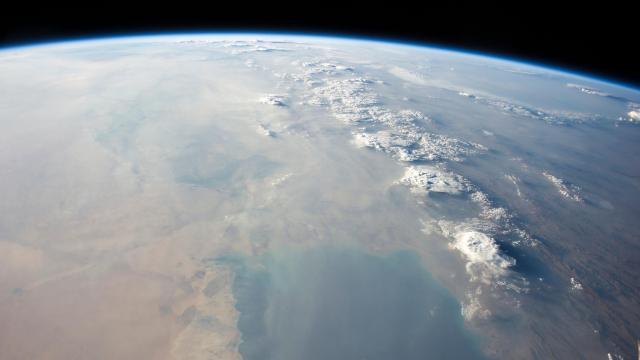It’s no secret that humans have made big changes to Earth and its atmosphere. But as greenhouse gases have built up in the air and our planet’s average surface temperature has risen, a lesser-known phenomenon has been happening.
Earth’s atmosphere has gotten dustier since the pre-industrial age. And all those additional particles have likely been subtly counteracting some of the effects of climate change — cooling the planet a little bit, according to a review study published Tuesday in the journal Nature Reviews Earth & Environment.
The effects of atmospheric dust are absent from nearly all climate studies and projections, according to the new analysis. Meaning that these models could be underestimating the warming associated with human-caused climate change. And, if the atmosphere becomes less dusty, we could be in for even more rapid temperature spikes.
“We want climate projections to be as accurate as possible, and this dust increase could have masked up to 8% of the greenhouse warming,” Jasper Kok, lead study researcher and an atmospheric physicist at the University of California, Los Angeles, said in a press statement. By adding the impacts of dust into future climate models, scientists could improve them, he continued. “This is of tremendous importance because better predictions can inform better decisions of how to mitigate or adapt to climate change.”
Kok and his co-researchers reached that 8% number via a complex combination of models, based on a wealth of previously published studies.
First, they had to figure out how atmospheric dust has changed over time. Using computer modelling and existing data from ice cores and sediment records, they found that the amount of large dust particles in the atmosphere has gone up by about 55% in the present, compared with the pre-industrial age. The reasons behind our increasingly dusty Earth are multitude, but it comes down to land use changes like increased agriculture and development, along with climate shifts like drought, according to the researchers.
Then, the study authors had to determine the overall climate effects of that dust.
Dust interacts with the climate in lots of different ways. Through scattering and absorbing heat from the Sun and Earth’s surface, dust particles can both cool and warm the planet. Dust can, for instance, reflect heat from the Sun back into space. Or, it can absorb and hold onto heat radiating off of Earth itself. The effects also vary based on region: Dust over reflective deserts, ice, and snow increases warming, whereas dust over oceans and dark forests leads to cooling.
The direction and magnitude of dust’s impact on global temperature further depends on factors like particle size, the wavelength of the radiation involved, and the landcover beneath the atmospheric dust. Dust can also chemically react with water and other compounds in the atmosphere to shift heat around, and dust particles can change cloud cycles. Finally, dust that eventually settles into water carries nutrients with it, and so can increase phytoplankton productivity and boost the amount of carbon dioxide our oceans absorb — indirectly affecting climate change.
TL;DR: It’s difficult to figure out exactly how and by how much atmospheric dust is really shifting global temperature. To get to their final estimate, Kok and crew calculated the heat effects of 12 different dust-related parameters — some in which dust increased warming and some in which it contributed to cooling — and added them all together. They found the net energy flux was somewhere between “substantial cooling” (-0.7 +/- 0.18 Watts per square metre) and “slight warming” (+0.3 Watts per square metre), with a median of -0.2 W/square metre. Hence, a calculated maximum cooling effect of about 8%.
Past research has documented how particle and aerosol pollution can cause planetary cooling. For instance, colder temperatures are a well-known side effect of some volcanic eruptions, and a whole subset of geoengineering hinges on that concept. But the Tuesday review is novel for its focus on naturally occurring dust.
Their model isn’t perfect, and the researchers note there is lots of uncertainty in their calculations — in large part because they are some of the first scientists to attempt such estimates. “This is the first review of its kind to really bring all these different aspects together,” Gisela Winckler, a climatologist at Columbia University who was not part of the new research, told the Guardian. But despite all that uncertainty, “it is more likely that dust cools the climate than warms the climate,” the study says — which is bad news for our understanding of climate change.
“We’ve been predicting for a long time that we’re headed toward a bad place when it comes to greenhouse warming,” said Kok to the Guardian. “What this research shows is that so far, we’ve had the emergency brake on.”
That accidental temperature buffer might not stay in place forever. Though atmospheric dust concentrations have risen since the pre-industrial age, they peaked in the 1980’s and have declined since. If that decline were to continue or intensify, warming could catch up to us extra quickly — an unnerving possibility in an already record-breaking, hot reality.
